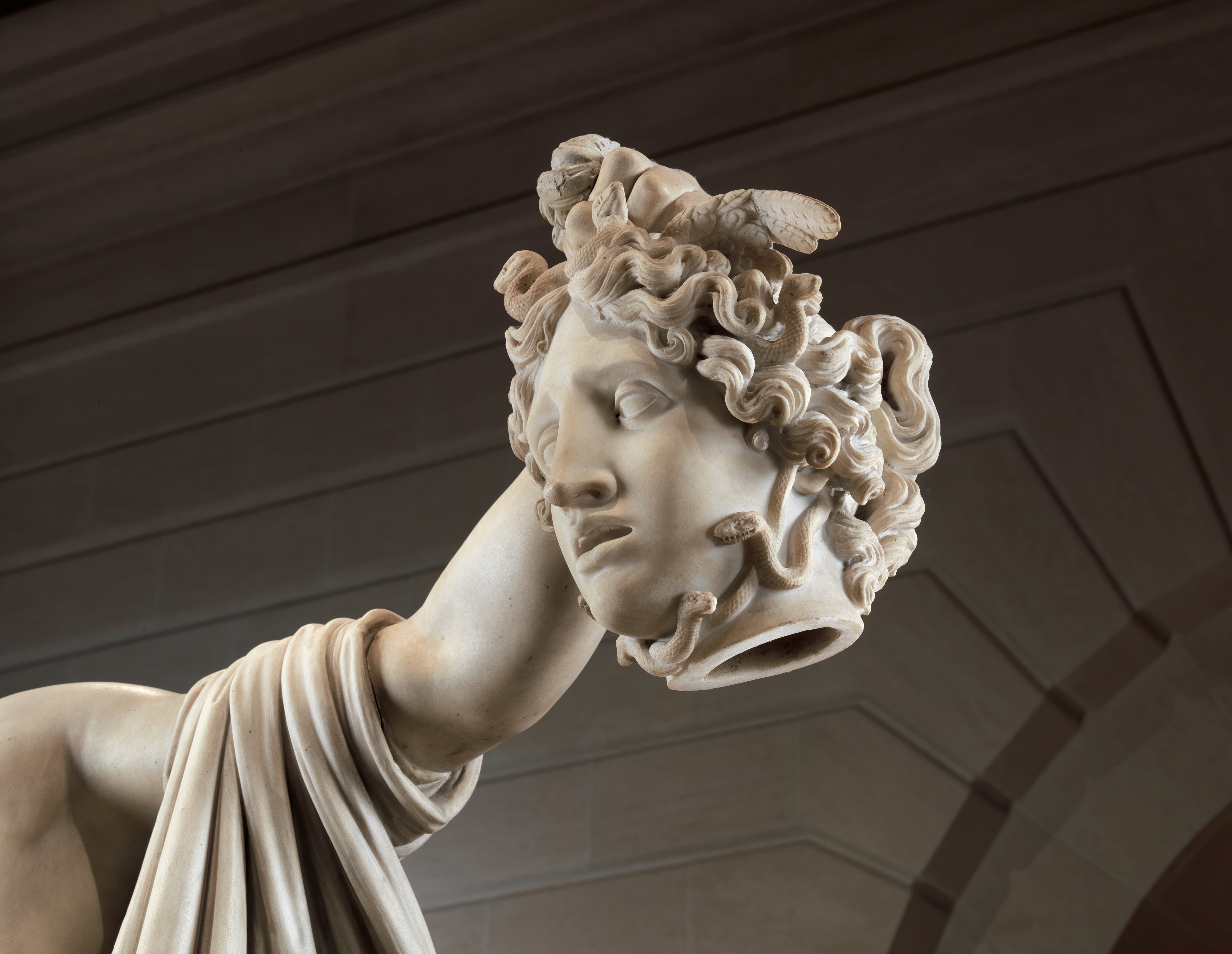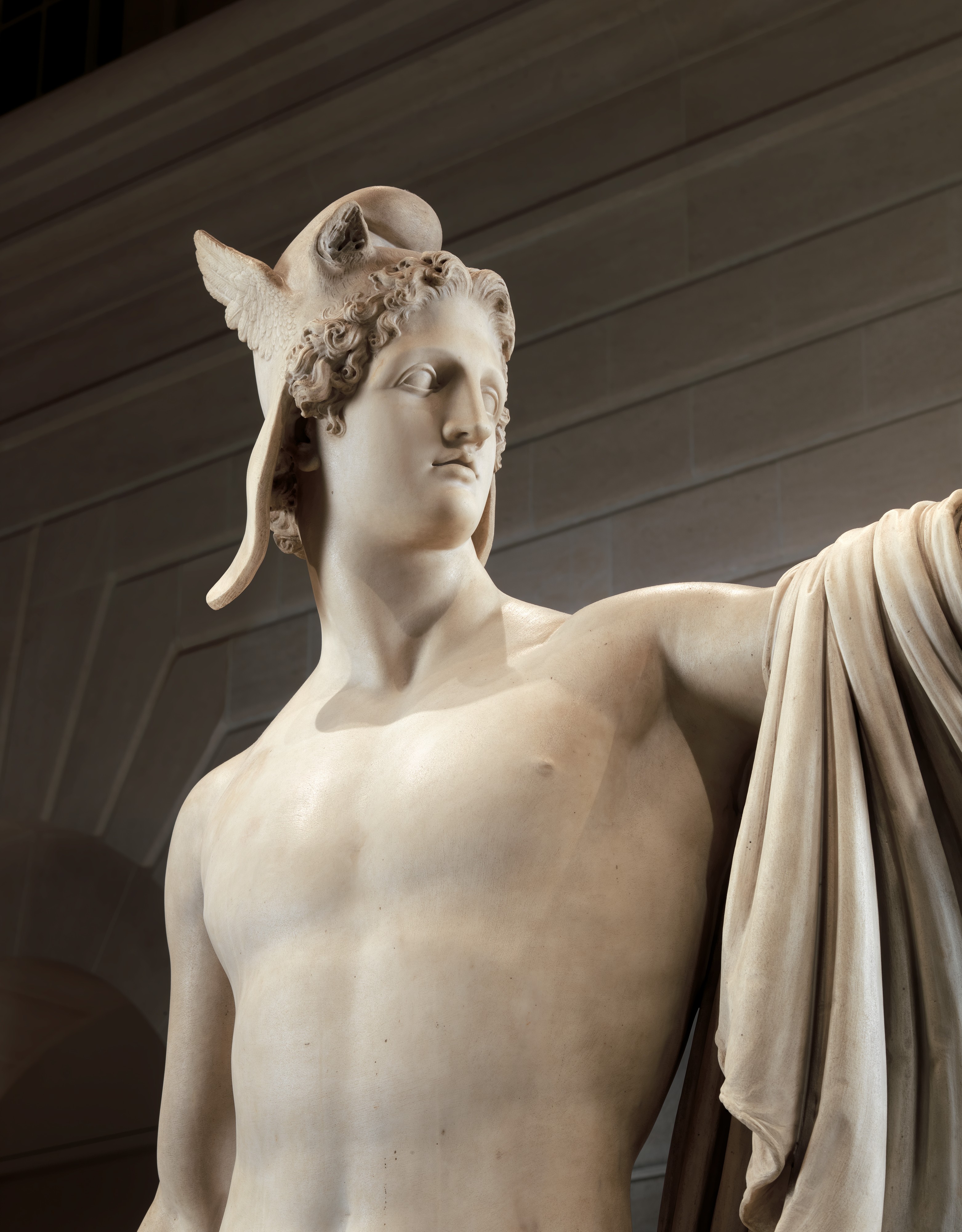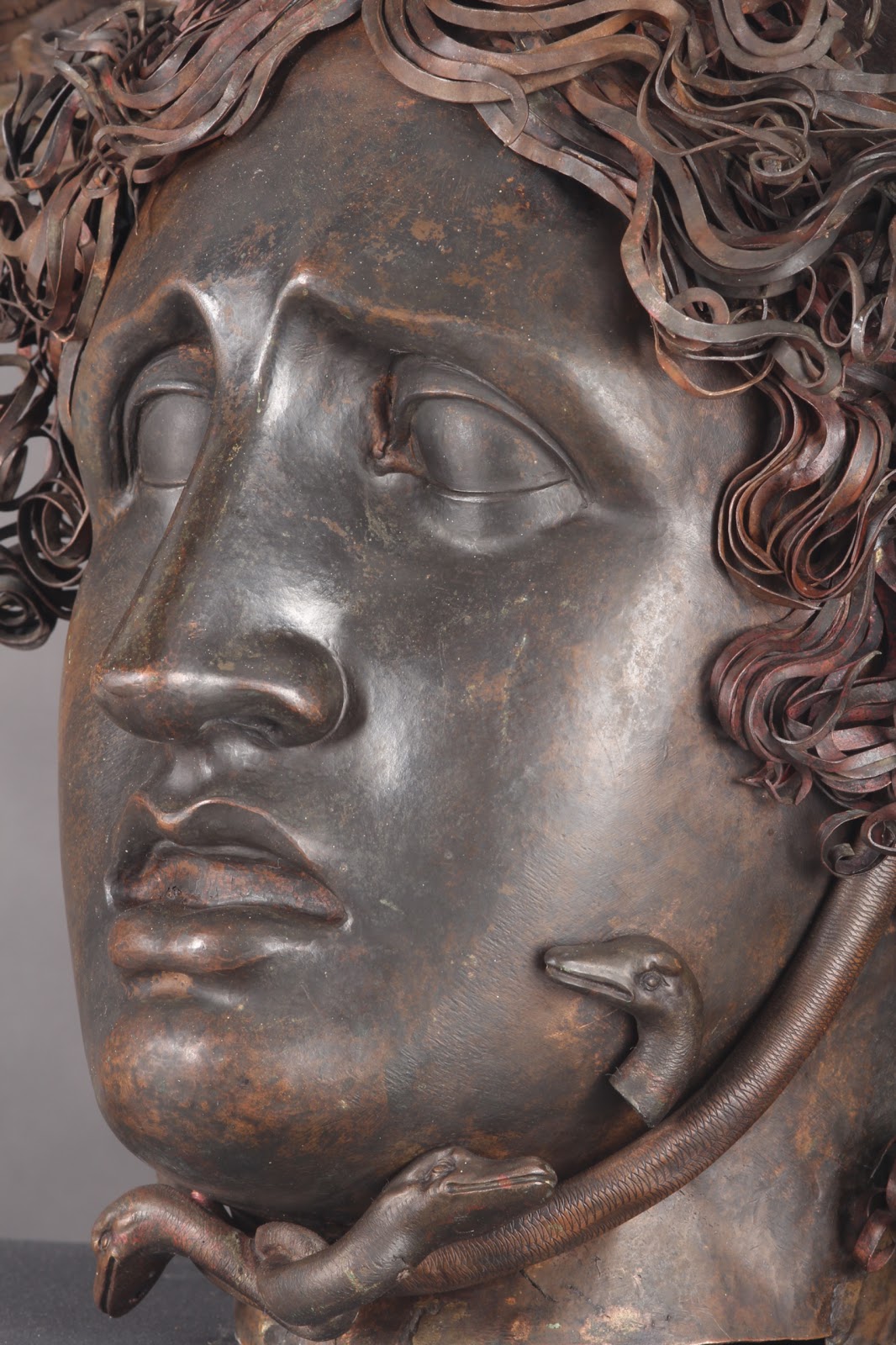
Public Art in Chicago AIC Head of Medusa [By Antonio Canova]
Octagonal Court Perseus Triumphant The statue shows the triumphant Perseus holding the severed head of the Medusa, one of the three Gorgons. The hero is shown with the winged cap, the sandals of Mercury and the sword which had been given to him in order to complete this task.

Perseus with the Head of Medusa, Antonio Canova Antonio canova, Roman
Email: [email protected] / Phone: +44 7429 011000. Several versions exist of Perseus Triumphant, with this sculpture design also sometimes known as Perseus Triumphant with the Head of Medusa. The sculptor, Canova, would slightly tweak each version leaving behind intriguing variations across the various iterations.

Perseus with the Head of Medusa, Antonio Canova, Metropolitan Museum of
Head of Medusa Antonio Canova The Metropolitan Museum of Art New York City, United States Download this artwork (provided by The Metropolitan Museum of Art). Learn more about this artwork..

Head of Medusa, Antonio Canova opacity Flickr
Antonio Canova ( Italian pronunciation: [anˈtɔːnjo kaˈnɔːva]; 1 November 1757 - 13 October 1822) was an Italian Neoclassical sculptor, [2] [3] famous for his marble sculptures.

Antonio Canova Perseus with the Head of Medusa Italian, Rome The Met
Antonio Canova (Italian, 1757-1822). Perseus with the Head of Medusa, 1804-6. Marble. The Metropolitan Museum of Art, New York, Fletcher Fund, 1967 (67.110.1). Here, the mythological hero Perseus triumphantly presents his trophy, Medusa's head, to the world.

QUEST FOR BEAUTY Detail The Head of Medusa from Antonio Canova’s...
Coordinates: 43.7692°N 11.2558°E Perseus with the Head of Medusa by Benvenuto Cellini Perseus with the Head of Medusa, in the Loggia dei Lanzi, Florence Perseus with the Head of Medusa is a bronze sculpture made by Benvenuto Cellini in the period 1545-1554.

Antonio Canova Perseus with the Head of Medusa Italian, Rome The Met
Explore Perseus with the Head of Medusa with fun facts, creative activities, and more.

Antonio Canova Head of Medusa, 17991800 Tutt'Art Masterpieces
Antonio Canova; Head of Medusa, c. 1801 Antonio Canova; Self-Portrait of the Sculptor Antonio Canova, 1812 Antonio Canova; Hercules and Lychas, 1850/1900 Antonio Canova; Saint Mary Magdalene Penitent, from Oeuvre de Canova, 1817 Antonio Canova; Charity, from Oeuvre de Canova, 1817

Free Images monument, statue, italy, medusa, vatican, art, temple
Perhaps the most influential artist of the 20th century, Pablo Picasso may be best known for pioneering Cubism and fracturing the two-dimensional picture plane in order to convey three-dimensional space. Inspired by African and Iberian art, he also contributed to the rise of Surrealism and Expressionism. Picasso's sizable oeuvre grew to.

Perseus with the head of Medusa Marble Antonio Canova Ital… Flickr
CANOVA, Antonio (b. 1757, Possagno, d. 1822, Venezia) Perseus with the Head of Medusa 1804-06 Marble, height 217 cm Metropolitan Museum of Art, New York: Canova, the preeminent sculptor of the age of Neoclassicism, was a prodigiously talented carver of marble. In Canova's hands the stone yielded brilliant effects, both pristine and sensual.

Head of Medusa The Art Institute of Chicago
Details Title: Perseus with the Head of Medusa Creator: Antonio Canova |Count Jan and Countess Valeria Tarnowski Date Created: 1804-6 Physical Dimensions: Overall (confirmed): H. 95 1/2 x.

Medusa by Antonio Canova Medusa art, Antonio canova, Relief sculpture
When Countess Valeria Tarnowska first met the sculptor Antonio Canova, on December 5, 1803, she recorded the event in her diary: "I saw the great Canova! I saw him amidst his glory, surrounded by his masterpieces — simple, modest, he seems to ignore the fact that he has become immortal."

Closeup view of the head of Medusa, from Antonio Canova's statue of
Neoclassical sculptor Antonio Canova dominated Rome's artistic scene at the turn of the 19th century. This plaster is a partial model for his large-scale marble statue Perseus Holding the Head of Medusa. According to Greek mythology, Medusa was a serpent-haired creature called a Gorgon whose gaze turned anyone who beheld her into stone.

Studio of Antonio Canova Head of Medusa Italian, Rome The Met
Tag this This sculpture is after Antonio Canova's marble statue of 1801, now in the Vatican Museum, Rome. Perseus is depicted triumphant with the severed head of Medusa in his left hand. He is shown in a winged hat (the 'Cap of Hades'), winged sandals lent to him by Hermes and a sword in his right hand lent to him by Zeus.

Public Art in Chicago AIC Head of Medusa [By Antonio Canova]
Page of Head of Medusa by CANOVA, Antonio in the Web Gallery of Art, a searchable image collection and database of European painting, sculpture and architecture (200-1900) Artists: Search: Glossary: Contact: Info: CANOVA, Antonio (b. 1757, Possagno, d. 1822, Venezia) Head of Medusa 1804-06.

"Head of Medusa" Antonio Canova, c. 1801 Swagato Flickr
Antonio Canova (1757 - 1822) was an Italian Neoclassical sculptor, famous for his marble sculptures. Canova was regarded as one of the greatest of the Neoclassical artists. The Baroque and Classical Revival inspired his artwork. Canova's passion in sculptures were either Heroic compositions, compositions of Grace, or Tomb monuments.